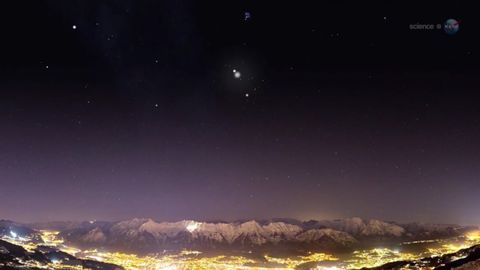NASA大公開:超美的聖誕節星空! (ScienceCasts: Christmas Sky Show)
VoiceTube 發佈於 2012 年 12 月 21 日  沒有此條件下的單字
沒有此條件下的單字- n.地點,處所;處於困境,陷入困境;點;少量,少許;斑點,污漬
- v.t.認出,發現
US /ˈplænɪt/
・
UK /'plænɪt/
- n. (c./u.)行星 ; 運星 ; 地球;(比喻)世界;(占星術)行星
- prop. n.地球
- v.t./i.顯眼;容易看到(或注意到);表達;表現;顯示,展示;(透過演示、示範)解釋;說明;給...帶路;帶領;證明(某事);給...看
- n.出洋相;展覽;表演,展出;演出;節目
- v.t./i.紡紗工;旋工;旋轉匙形誘餌;旋轉
- v.i.旋轉;暈眩
- n.暈眩;對一件新聞的看法;詮釋;旋轉
- v.t.紡紗
